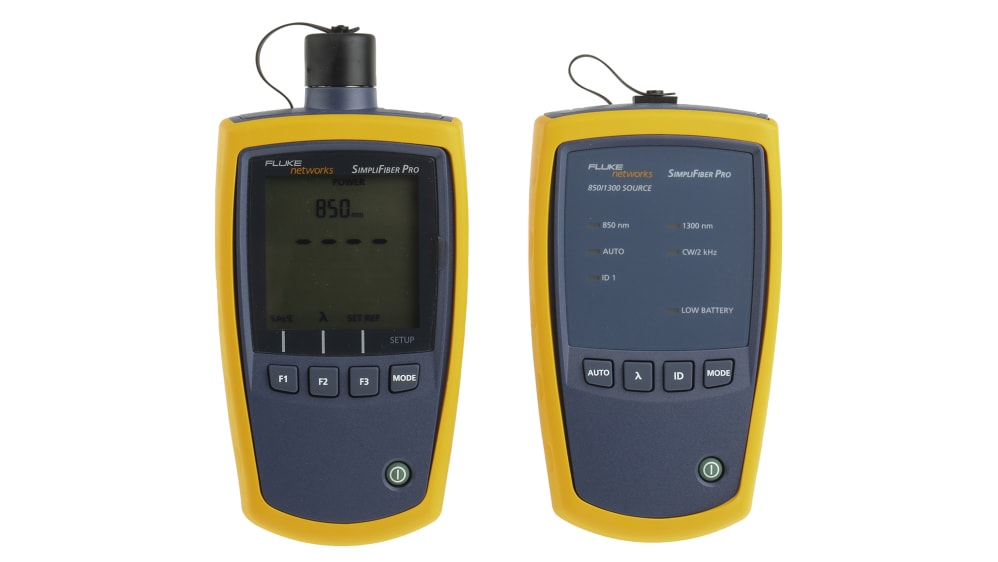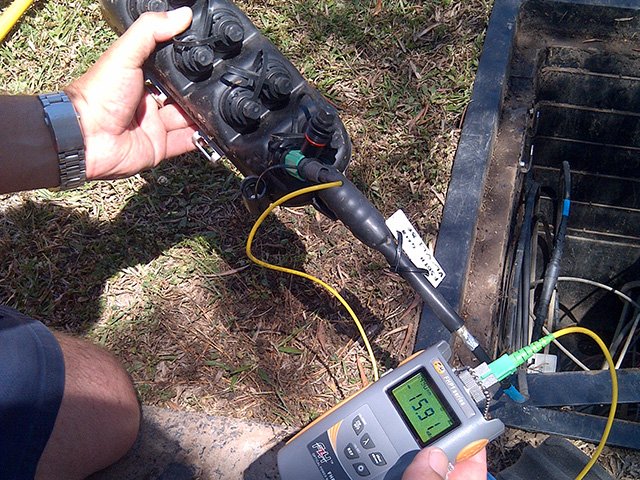The use of ofda optimizes fibre evaluation with cutting-edge optical technology.
Revealing the Trick Utilizes of Optical Fibre Testing for Efficient Data Transmission
In the world of contemporary communication, optical fiber screening arises as a necessary technique for maximizing information transmission. By utilizing methodologies such as Optical Time Domain Name Reflectometry (OTDR) and insertion loss analyses, network operators can properly identify and resolve problems that may compromise signal honesty. As the demand for faster and a lot more reliable links continues to rise, the ramifications of these screening methods extend beyond prompt fault detection, affecting long-term network performance. Comprehending the complex applications of optical fiber screening invites a deeper expedition right into its pivotal function in forming the future of data communication.

Relevance of Optical Fiber Screening
The relevance of optical fiber screening can not be overemphasized, as it works as a vital component in ensuring the integrity and performance of data transmission systems. In a period where high-speed communication is extremely important, any type of deficiencies in fiber optics can lead to considerable data loss and decreased performance. As a result, extensive screening procedures are vital to verify the integrity and performance of optical cords.
Checking permits the identification of defects such as micro-bends, macrobends, and splice losses that could hinder signal top quality. Additionally, it offers understandings into the general depletion and bandwidth capacities of the fibre, making sure that the network satisfies particular operational requirements. Routine screening not only enhances system efficiency but likewise lengthens the life-span of the facilities by identifying potential concerns before they rise into expensive failings.

Kinds Of Optical Fibre Examinations
Various kinds of optical fibre examinations are performed to make sure the performance and reliability of fiber optic networks. These tests can be categorized into several crucial kinds, each offering a particular function in examining the stability of the fibre.
First, Optical Time Domain Name Reflectometry (OTDR) is a prominent examination that identifies faults, mates, and ports within the fiber. By sending pulses of light and examining the shown signals, professionals can pinpoint concerns along the fibre's length.
2nd, insertion loss examinations examine the amount of signal loss when light passes through adapters or splices, which is essential for keeping network performance.
Third, return loss examinations gauge the quantity of light mirrored back in the direction of the source, providing insights right into the high quality of connections and possible sources of disturbance.
In addition, continuity tests make certain More Info that the fibre path is total, enabling specialists to confirm that the fiber is undamaged with no breaks. optical fibre diameter analyser.
Last but not least, visual mistake locators use visible light to determine breaks or extreme bends in the fibre, helping in quick troubleshooting. Jointly, these tests develop a thorough method to preserving ideal performance in fibre optic networks.

Applications in Network Maintenance
In modern telecommunications, effective network upkeep depends heavily on optical fiber testing to identify and fix concerns quickly. Regular testing guarantees that the network runs at ideal efficiency degrees, lowering downtime and improving individual experience.
One of the key applications of optical fiber screening in upkeep is the detection of mistakes, such as breaks, bends, or incorrect connections. Techniques like Optical Time Domain Name Reflectometry (OTDR) enable specialists to find these problems properly and analyze the quality of the fibre web link. Additionally, loss testing confirms the honesty of the optical course, making certain that signal depletion stays within appropriate restrictions.
Routine maintenance testing also aids in precautionary steps, determining possible troubles before they intensify right into considerable failings. This aggressive technique can save companies both time and funds. Throughout upgrades or growths, optical fiber testing ensures that new installments incorporate seamlessly with existing infrastructure.
Enhancing Data Transmission Reliability
Efficient network maintenance with optical fibre screening not only addresses immediate problems but likewise plays a considerable role in improving information transmission integrity. By recognizing mistakes, determining signal loss, and evaluating the overall problem of fiber optic cables, testing guarantees that possible problems are remedied prior to they intensify right into considerable interruptions.
Regular optical fibre screening, such as time-domain reflectometry (TDR) and optical time-domain reflectometry (OTDR), permits service technicians to pinpoint the precise places of breaks, bends, or port issues within the network. This positive method not just lessens downtime however likewise enhances the performance of information transmission by making sure that the pathways for signals are clear and working efficiently.
Furthermore, screening help in confirming adherence to sector criteria and specs, which is critical for keeping the integrity of data circulation. By ensuring that each connection satisfies called for thresholds for loss and top quality, organizations can boost their self-confidence in the integrity of their data networks.
Inevitably, buying thorough optical fibre testing not just improves data transmission reliability however likewise supports the long-lasting functional performance why not try here of interaction facilities.
Future Patterns in Fiber Screening
Arising technologies are poised to transform fibre screening, leading the method for enhanced performance and precision in data transmission diagnostics (robotic vision). As the need for faster internet and higher bandwidth remains to increase, the combination of advanced devices such as man-made intelligence (AI) and maker discovering (ML) is readied to transform click here to read conventional fiber testing approaches. These innovations will certainly enable anticipating upkeep and automated mistake detection, substantially reducing downtime and improving network dependability
Additionally, the fostering of Net of Things (IoT) devices will facilitate real-time monitoring of fiber networks, permitting instant recognition of performance issues. This change in the direction of positive monitoring will certainly minimize disruptions and optimize data flow.
Furthermore, technologies in optical time-domain reflectometry (OTDR) and new screening standards will certainly enhance the precision of measurements, making sure that information stability is maintained throughout the transmission procedure. The arrival of 5G modern technology also demands the growth of extra innovative fibre testing methods to support its high-speed demands.
Conclusion
Finally, optical fibre testing is essential for preserving reliable data transmission within communication networks. By employing numerous screening techniques, such as OTDR and insertion loss tests, prospective mistakes can be determined and corrected, thereby improving signal clearness and reducing downtime. Routine testing not just makes certain conformity with industry criteria but also assists in proactive maintenance, inevitably adding to the lasting reliability and performance of fiber optic systems. The continued development of screening approaches will certainly additionally bolster these abilities in the future.